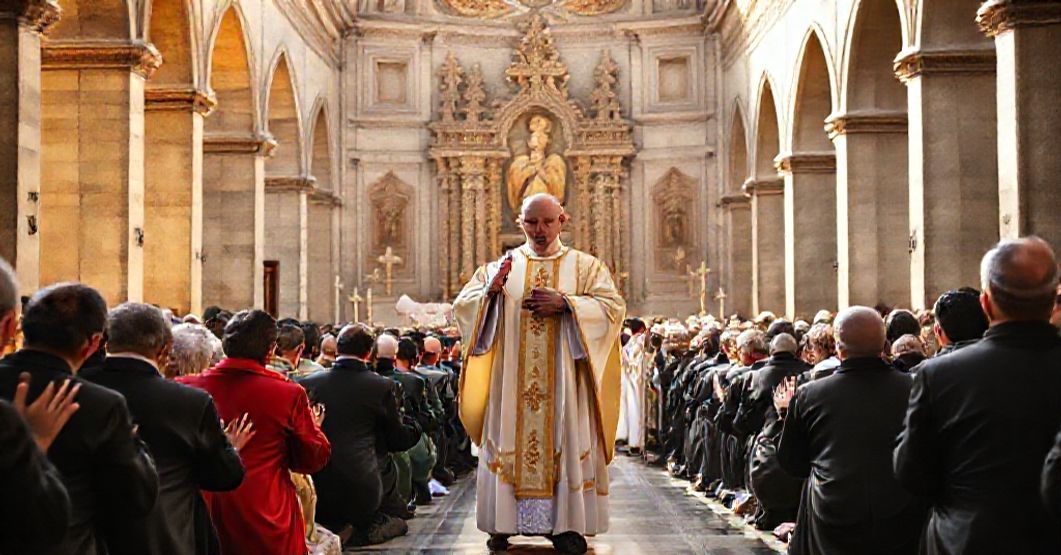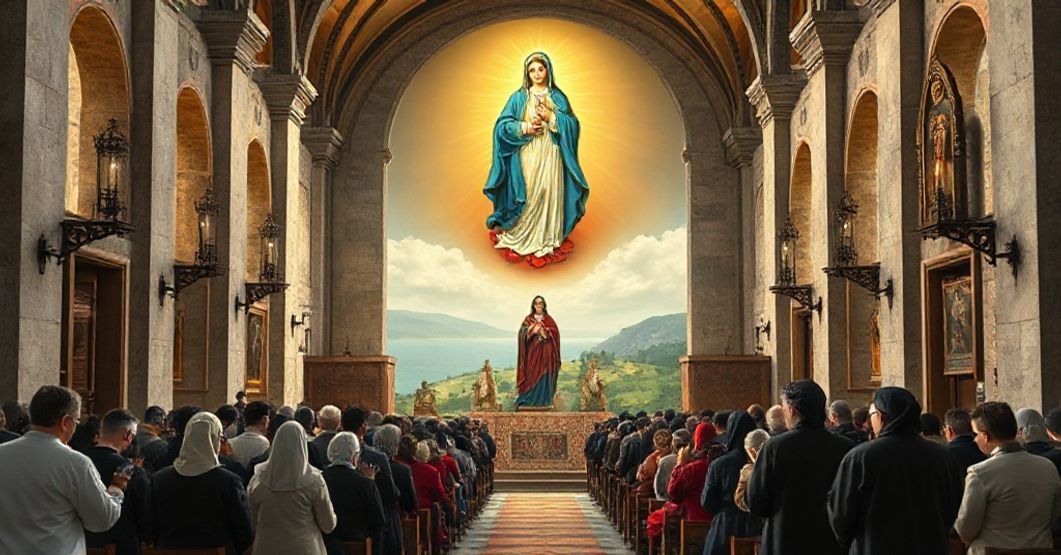Antipopes of the Antichurch



















Timeline of this heretical pontiff
Encyclical Letters
+ 15 posts1959
+ 7 posts1961
+ 4 posts1962
+ 2 posts1963
+ 2 postsApostolic Exhortations
+ 3 postsApostolic Constitutions
+ 93 posts1958
+ 6 posts1959
+ 87 postsMotu Proprio
+ 15 posts1958
+ 1 posts1959
+ 1 posts1962
+ 11 postsApostolic Letters
+ 151 posts1958
+ 4 posts1959
+ 63 posts1960
+ 78 posts1961
+ 1 posts1962
+ 4 posts1963
+ 1 postsSpeeches
+ 99 posts1958
+ 2 posts1959
+ 26 posts1960
+ 29 posts1961
+ 16 posts1962
+ 24 postsMessages
+ 6 posts1959
+ 4 postsHomilies
+ 4 postsLetters
+ 152 posts1958
+ 1 posts1959
+ 48 posts1960
+ 32 posts1961
+ 31 posts1962
+ 30 posts1963
+ 10 postsNot categorized
+ 1 posts1958
+ 1 postsNews feed


Urbis Fori Livii (1959.01.16)
The text is a brief Latin decree in which John XXIII, at the very beginning of his usurped reign, elevates the church of Saint Mercurialis in Forlì to the title and dignity of a minor basilica, praising its antiquity, architecture, artistic treasures, the cult of Saint Mercurialis, and the piety of the faithful, and, invoking his claimed apostolic authority, confers on it all juridical rights and privileges of a minor basilica, declaring contrary provisions null and void. It is precisely in such apparently innocuous acts that the conciliar usurpation manifests its chilling strategy: to cloak an already operative revolution against the Kingship of Christ and the divine constitution of the Church under pious phrases and administrative gestures.


Pientissima Virgo (1959.01.16)
The text under review, issued by the usurper John XXIII on January 16, 1959, confers the title and privileges of a Minor Basilica upon the church of the Blessed Virgin Mary of the Seven Sorrows in Pescara. It rehearses local Marian piety, recalls Pius XII’s designation of Our Lady of the Seven Sorrows as co-principal patroness of the diocese, praises the Capuchin custodians, and—“out of the fullness” of supposed apostolic power—elevates the sanctuary to basilica rank, granting all the rights and privileges attached to that title.
In one page of apparently edifying Marian devotion, we see the cold legalization of a counterfeit authority, the instrumentalization of true Marian titles to crown the nascent conciliar revolution, and the blasphemous claim that a manifestly modernist intruder can legislate in the name of Christ and His Church.


Agnes sepulchrum (1959.02.27)
The text promulgated by John XXIII under the title “Agnes sepulchrum” concerns the elevation of the Roman church of Saint Agnes Outside the Walls to the dignity and prerogatives of a “stational” church, attaching to it the associated indulgences and prescribing that an annual station be held there on the same day as at Saint John ante Portam Latinam, namely the Saturday after the First Passion Sunday. Wrapped in ornate references to Saint Agnes, Constantine, ancient piety, and the liturgical tradition of the Roman stations, it presents itself as a gesture of filial continuity with the Roman Church’s cult of martyrs and of encouragement of Lenten devotion.


Celsitudo ex humilitate (1959.03.19)
The Latin text published under the name of John XXIII as “Celsitudo ex humilitate” presents a solemn declaration of St Lawrence of Brindisi as Doctor of the Universal Church. It extols his Franciscan humility, zeal against Protestant errors, mastery of Scripture and languages, Marian doctrine, and apostolic labours, and concludes with the formal inscription of his feast and doctrinal title in the universal Church.
Varia
Announcement:
– News feed –implemented
– Antipopes separate web sites with their all documents refutation – in progress
